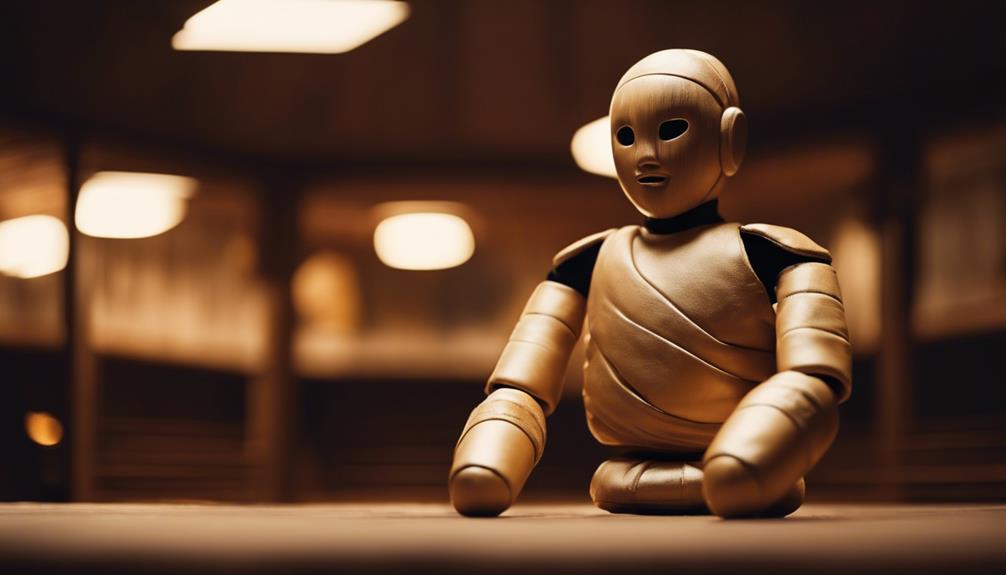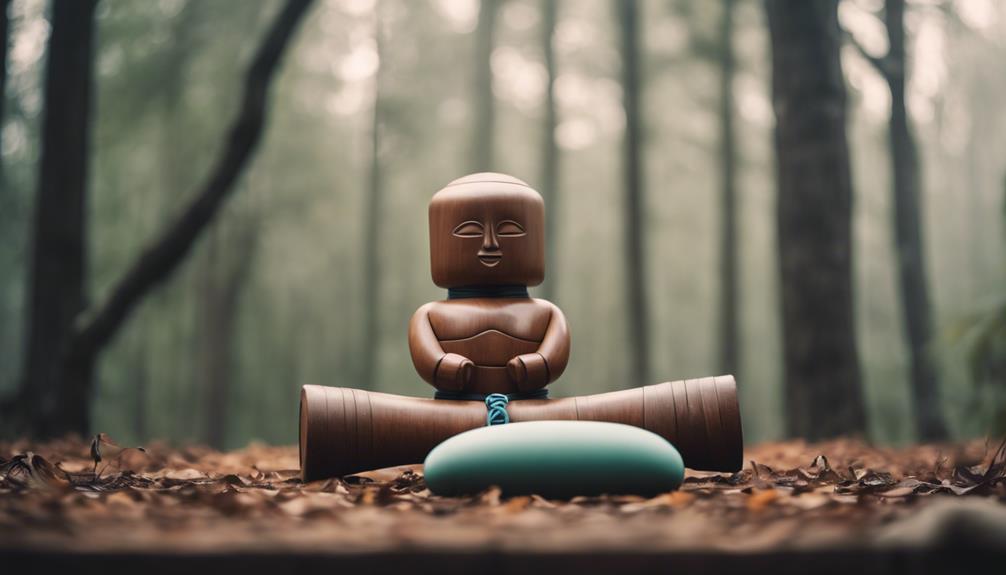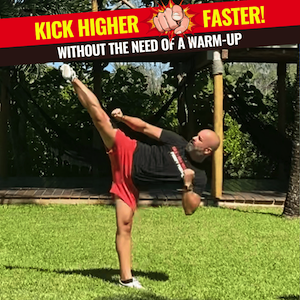As you enter your 40s, your martial arts performance suffers from decreased flexibility due to age-related changes, weight gain, and slower recovery times. To regain your range of motion, incorporate hip and dynamic stretching, such as leg swings and arm circles, into your routine. Tailor your flexibility exercises to prevent injuries and focus on consistency, aiming for daily stretching to see significant improvements. By combining stretching with strength training, you'll enhance your martial arts performance and execute high kicks with ease. By exploring effective techniques and strategies, you'll discover the key to overcoming age-related flexibility issues and achieving success.
Overcoming Age-Related Flexibility Issues
As you enter your 40s, age-related changes can start to affect your flexibility, making it more challenging to perform martial arts movements with the same level of fluidity and range of motion as you once did.
Weight gain and slower recovery times are common factors contributing to decreased flexibility. To counteract this, you need to incorporate physical activity that prioritizes flexibility, such as regular hip stretching and dynamic stretching techniques. This will help improve your range of motion, enabling you to perform martial arts movements with more ease.
It's essential to tailor your flexibility routine to accommodate physical changes associated with aging. This means prioritizing gradual improvement and injury prevention.
Consistency is key; incorporating daily stretching and specific exercises like the wide horse stance can lead to significant improvements in overall flexibility and martial arts performance.
By acknowledging the impact of aging on flexibility and taking proactive steps, you can maintain and even improve your martial arts skills as you age.
Effective Stretching Techniques for Martial Arts
You'll improve your martial arts flexibility more effectively with dynamic stretching and PNF techniques, which are particularly beneficial for increasing kick height.
To get the most out of these techniques, you'll want to focus on moving your joints through a range of motion while maintaining muscle activation.
Dynamic Stretching Techniques
Regaining flexibility is an essential aspect of martial arts training, particularly after the age of 40. To improve your flexibility and prepare your muscles and joints for martial arts movements, incorporate dynamic stretching techniques into your training routine. Dynamic stretching involves moving your joints through a range of motion while keeping your muscles active.
- Use leg swings and arm circles to prepare your muscles and joints for the movements required in martial arts.
- Incorporate movements that mimic martial arts techniques, like high kicks or lunges, into your dynamic warm-up routine to enhance muscle temperature and elasticity.
- Utilize PNF (Proprioceptive Neuromuscular Facilitation) stretching, which involves contracting and relaxing muscles, to greatly improve flexibility.
- Integrate resistance band exercises into your dynamic stretching routine to simultaneously enhance strength and flexibility.
Consistently practicing dynamic stretching before training sessions will help you gradually improve your flexibility and reduce the risk of injuries associated with age-related stiffness.
Preventing Overstretching Injuries
Preventing overstretching injuries is a vital aspect of martial arts training, particularly for practitioners over 40 who may be more susceptible to age-related stiffness and decreased flexibility. To minimize the risk of injury, you should incorporate dynamic stretching techniques, such as leg swings and arm circles, into your routine. These exercises are generally safer and more effective for improving flexibility than static stretching.
In addition to dynamic stretching, use Proprioceptive Neuromuscular Facilitation (PNF) techniques, which involve alternating contractions and relaxations of muscles. This approach enhances flexibility while minimizing the risk of overstretching.
Guarantee proper warm-up routines that include light aerobic activity to increase blood flow to the muscles before engaging in any stretching exercises. Also, avoid pushing too hard during stretches, focusing instead on reaching a point of mild tension rather than pain.
A proper diet also plays an essential role in preventing overstretching injuries by maintaining healthy muscles and connective tissues. By gradually increasing the difficulty and intensity of your stretching routines and allowing sufficient time for recovery between sessions, you can reduce the likelihood of overstretching injuries and maintain peak flexibility for martial arts training.
Recommended Exercises for Improved Flexibility
How can martial artists over 40 regain the flexibility that's vital for executing high kicks, swift footwork, and agile movements?
To achieve this, you'll want to focus on exercises that improve your range of motion and reduce stiffness. Consistency is key, so aim to practice flexibility exercises daily.
Here are some exercises to get you started:
- Perform the wide horse stance exercise to improve hip flexibility and strength, essential for high kicks.
- Incorporate side rising kicks with resistance bands to build lateral strength and enhance your overall range of motion.
- Try front leg stretches by placing your leg on a table and bending towards it, gradually increasing the height of the leg support over time.
- Utilize dynamic stretching and PNF techniques, which are more effective than static stretches in improving flexibility and preventing injuries.
Importance of Strength Training for Flexibility
Beyond mere flexibility exercises, incorporating strength training into your martial arts routine is fundamental for achieving ideal flexibility after 40. As you age, your muscles naturally lose mass and strength, which can negatively impact your flexibility.
By engaging in strength training, you'll improve muscle control and stability, allowing you to execute martial arts techniques more effectively.
You should incorporate resistance exercises every other day to develop the strength needed to support increased flexibility in your martial arts movements. Focus on strengthening your leg muscles, as they're essential for preserving knee joint integrity during stances. This will allow for better overall flexibility in kicking techniques.
Additionally, core conditioning is important, providing stability and support for your entire body and facilitating a greater range of motion in martial arts movements.
Injury Prevention and Joint Protection

Numerous martial arts practitioners over 40 have experienced the debilitating effects of joint injuries, which can severely impact their training and overall quality of life.
As you continue training in martial arts, it's crucial to prioritize injury prevention and joint protection. By doing so, you can maintain your flexibility and mobility while minimizing the risk of long-term damage.
To prevent injuries and protect your joints, focus on proper techniques, especially in your stances and movements. Here are some key strategies to incorporate into your training:
- Focus on correct pivoting during kicks to minimize torsional stress on your joints.
- Gradually increase your training intensity and prioritize technique over power.
- Use soft landings during jumps and controlled movements during practice to reduce the impact on your lower body joints.
- Incorporate targeted flexibility exercises into your training regimen to enhance long-term joint health and mobility.
Nutrition and Recovery for Optimal Flexibility
As you progress in your martial arts training, nutrition plays an increasingly vital role in maintaining and improving flexibility, particularly after 40. Proper nutrition influences muscle recovery and inflammation, making it essential for ideal flexibility.
Focus on whole foods like vegetables and lean meats, which promote ideal bodily functions. Staying hydrated is also essential, as it maintains muscle elasticity and joint lubrication, greatly improving flexibility during training.
Consuming adequate protein supports muscle repair and growth, enhancing overall strength and facilitating better flexibility. Incorporate anti-inflammatory foods, such as fatty fish and nuts, to aid in recovery and reduce stiffness, allowing for more effective stretching and flexibility training.
Prioritize micronutrients, particularly magnesium and vitamin D, which support muscle function and recovery, contributing to improved flexibility in martial arts practice.
Maintaining Flexibility Through Consistent Practice

Flexibility exercises are a crucial component of martial arts training, and consistent practice is essential to maintain and improve range of motion, especially after 40. As you incorporate flexibility exercises into your routine, you'll notice significant improvements in your kick height and overall performance.
Regular practice helps you achieve substantial gains in flexibility, which is often a gradual process. To maximize your flexibility, focus on these key exercises:
- Dynamic stretching and PNF techniques to improve range of motion
- Wide horse stance and front leg stretches to target hip flexibility
- Gradually increasing leg support height during stretches to enhance flexibility while minimizing injury risk
- Incorporating daily stretching routines to yield substantial improvements in flexibility
Consistent practice not only improves performance but also aids in recovery and muscle relaxation, which is essential for older martial artists.
By prioritizing flexibility exercises and consistent practice, you'll maintain and improve your range of motion, ensuring you can execute high kicks with ease and continue to excel in martial arts.
Remember to make flexibility exercises a regular part of your training routine to see noticeable improvements.
In Summary
As you continue to practice martial arts after 40, remember that consistency is key to regaining and maintaining flexibility. "Use it or lose it" is a harsh reality when it comes to flexibility, so make sure to incorporate stretching and strength training into your daily routine. With dedication and the right techniques, you can overcome age-related flexibility issues and achieve peak performance in your martial art of choice. Stay flexible, stay strong.



